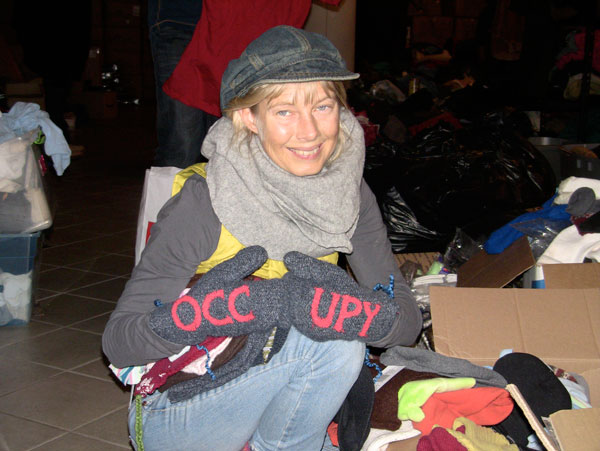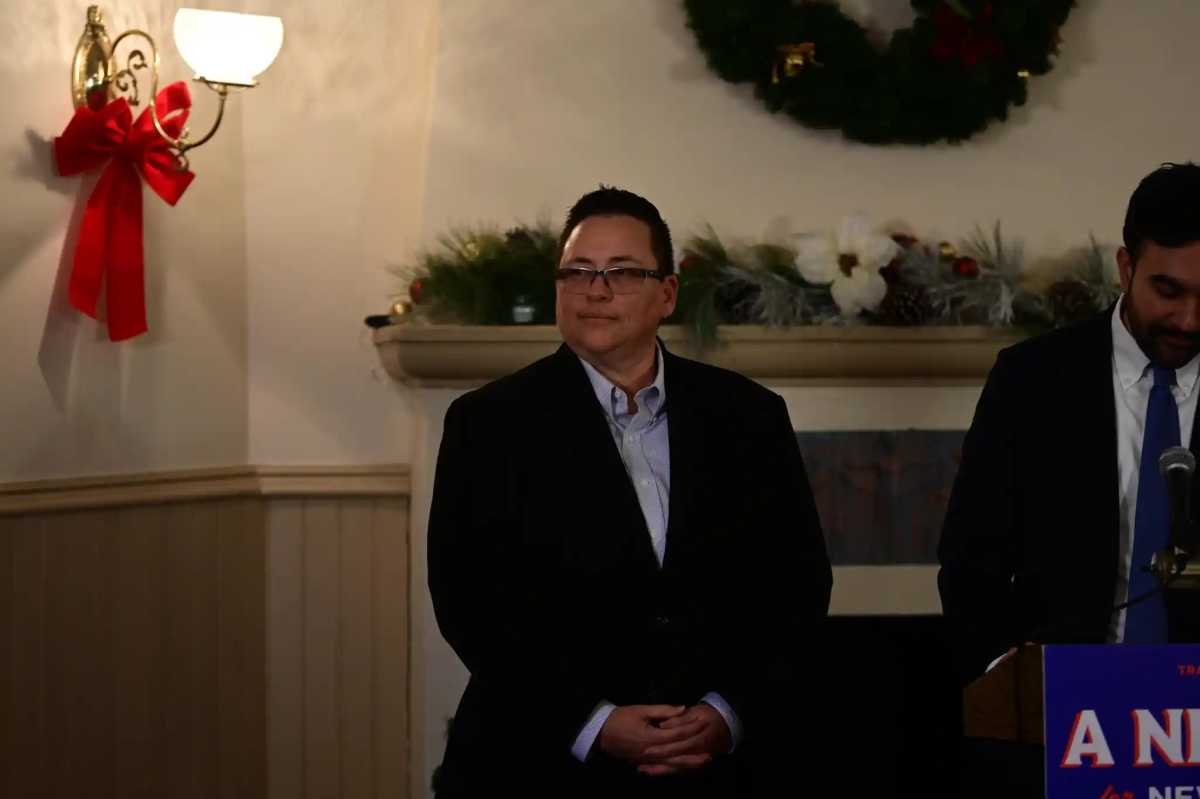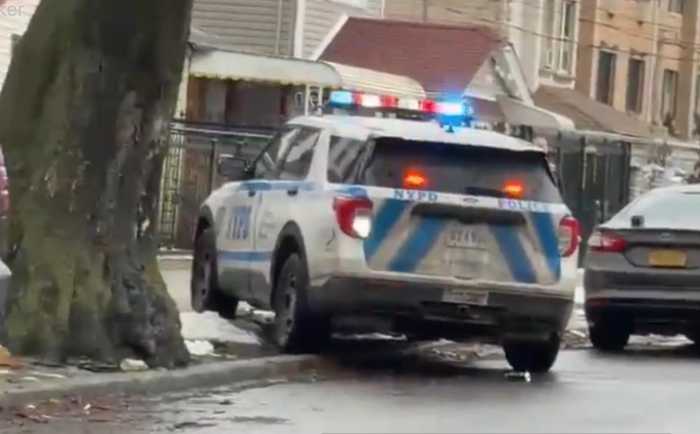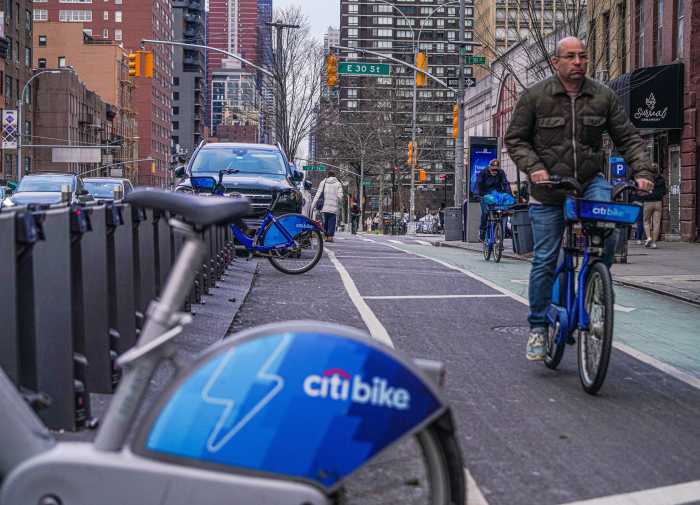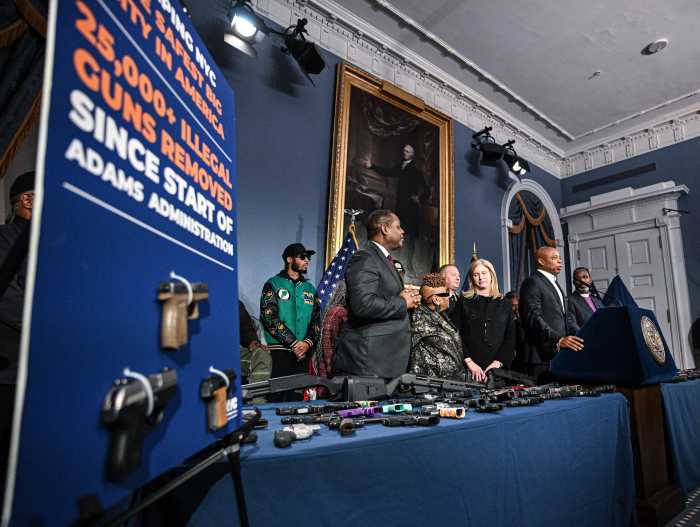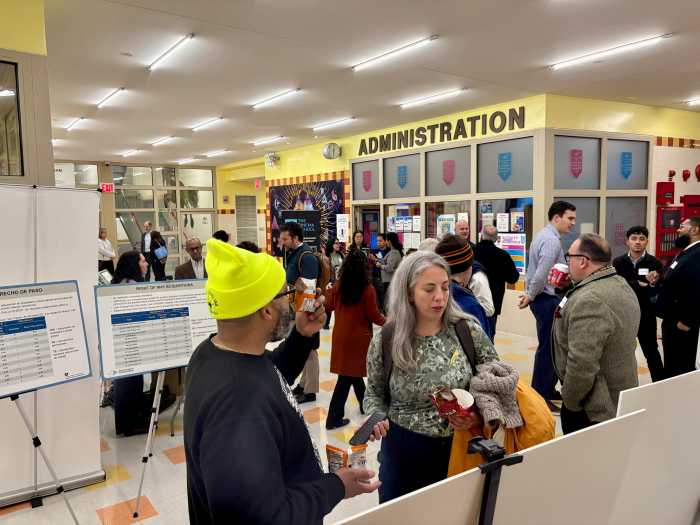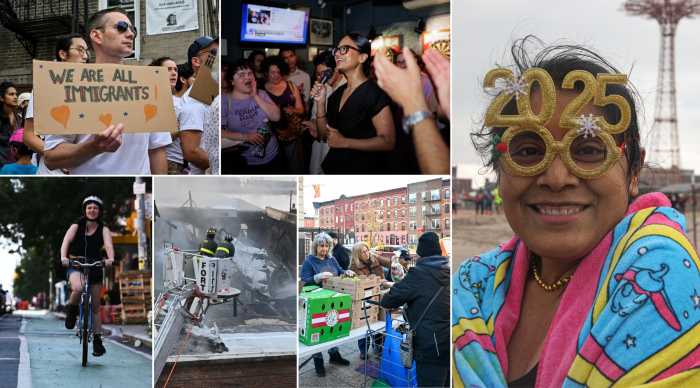 [/media-credit]
[/media-credit]
- An Occupy Wall Street activist shows off some the items that have been pouring in via donations to make sure the demonstrators stay warm during the winter.
BY CYNTHIA MAGNUS | With winter approaching Occupy Wall Street camp organizers are working to ensure an adequate supply of needed materials as well as viable means to keep the movement going as weather becomes an issue.
The Occupy Wall Street “shipping, inventory, and storage” group started out of the back of a U-Haul on Oct. 4 when volunteer Saum Eskandani with two others saw a need to unpack and organize the donations that had begun to flow into Camp Zuccotti from all over the country. Within 48 hours they acquired their space at 52 Broadway through a connection with the United Federation of Teachers.
The space now holds a surplus of some items that the group would like to send to other “occupy” groups to share the wealth and promote “inter-occupation” communications. The S.I.S. group recently received a $5,000 export budget from the O.W.S. General Assembly for this purpose.
Eskandani estimates that the group receives over 100 boxes daily, with a steep increase accompanying the cold weather. He said the camp’s “comfort” station was overwhelmed during the Oct. 29 nor’easter when donors brought hundreds of cold-weather items to the park. He also proposed to the O.W.S. general assembly that the group share surplus items with the wider New York City community, “in solidarity with the15 million unemployed workers” in America. The distribution will be handled by the outreach working group, and would alleviate some of the storage space shortage, as well as make room for needed items.
Among the items in short supply, according to S.I.S. co-coordinator Justin Strekal, are boots, non-cotton thermals, tarps, cold weather sleeping bags, and non-perishable food.
“We appreciate everything they’re sending, but some items being received are more appropriate for other climates,” said Strekal.
S.I.S. volunteer Nick Thommen added, “We have a lot of stuff. People are sending us stuff when they should be supporting their local occupation.”
Eskandani said, “We have been given a great deal of wealth. Let’s show Wall Street how we handle our stock.”
In addition to the 6800 sq. ft. storage space at 52 Broadway that O.W.S. rents for $1 per month, an anonymous donor recently came forward with an offer to pay for office space at the U.F.T. building at 50 Broadway. The 2500 sq. ft. space that O.W.S. began using this month will be used by official O.W.S. working groups and comes with heat, electricity, and internet access, and costs “about $5,000 a month,” according to a U.F.T. spokesman.
The space also has phone service, which O.W.S. is responsible for paying, and they are using desks and tables left by a former tenant, said the spokesman. The lease is held by a non-profit that handles the rent payment on behalf of the anonymous donor.
Some members of O.W.S. are concerned about other “occupy” groups coming to rely too heavily on Occupy Wall Street, which is seen as the flagship group. Several recent general assemblies have featured requests for funds from other occupations, such as Occupy Oakland, which recently received a $20,000 allocation from O.W.S. and various groups in the city who identify with the movement but are not officially part of it.
Pete Dutro with the O.W.S. finance working group said, “Winter will become expensive.”
Instead of having funding requests from outside groups coming through the G.A., Dutro said the finance group would welcome representatives coming down to Zuccotti Park to discuss their needs so that O.W.S. could make referrals to financing tools.
Among other winter-related concerns is the layout of the camp, and the clutter of small tents and personal items that inhibit movement within the park. Last week camp planners began to install large army tents, which can accommodate more people and promote safer spaces. A challenge to establishing the large tent set-up is that some occupiers are resistant to giving up their personal tents.
These tents have been a problem because they can block egress from the park in emergencies. Several power generators have been brought back into the park following last month’s confiscation by the FDNY of six generators and several containers of fuel. Incentives to get people to give up their “real estate” and allow the installation of large group tents is the promise of tents that would be better insulated, include cots and provide better security for people and their possessions.



